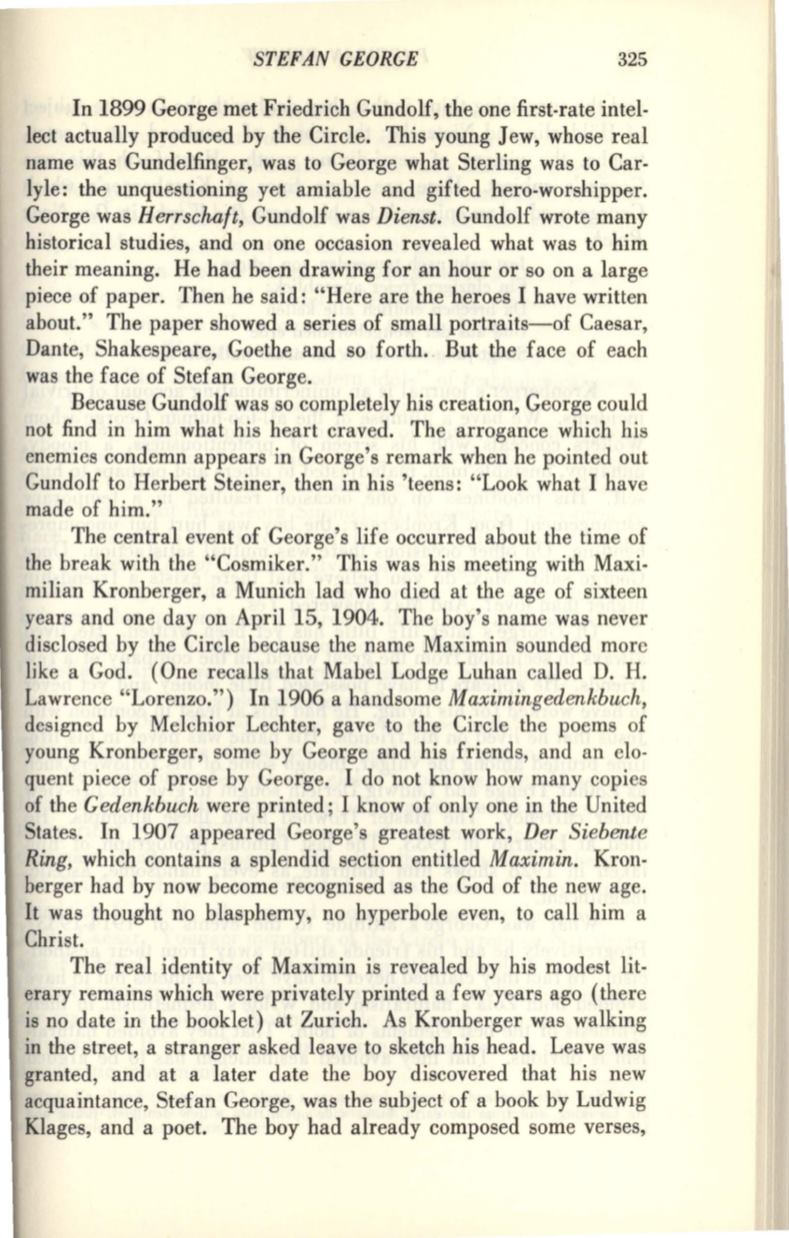
STEFAN GEORGE
325
In 1899 George met Friedrich Gundolf, the one first-rate intel–
lect actually produced by the Circle. This young Jew, whose real
name was Gundelfinger, was to George what Sterling was to Car–
lyle: the unquestioning yet amiable and gifted hero-worshipper.
George was
Herrschaft,
Gundolf was
Dienst.
Gundolf wrote many
historical studies, and on one occasion revealed what was to him
their meaning. He had been drawing for an hour or so on a large
piece of paper. Then he said: "Here are the heroes I have written
about." The paper showed a series of small portraits-of Caesar,
Dante, Shakespeare, Goethe and so forth . . But the face of each
was the face of Stefan George.
Because Gundolf was so completely his creation, George could
not find in him what his heart craved. The arrogance which his
enemies condemn appears in George's remark when he pointed out
Gundolf to Herbert Steiner, then in his 'teens: "Look what I have
made of him."
The central event of George's life occurred about the time of
the break with the "Cosmiker." This was his meeting with Maxi–
milian Kronberger, a Munich lad who died at the age of sixteen
years and one day on April 15, 1904. The boy's name was never
disclosed by the Circle because the name Maximin sounded more
like a God. (One recalls that Mabel Lodge Luhan called D. H.
Lawrence "Lorenzo.") In 1906 a handsome
Maximingedenkbuch,
designed by Melchior Lechter, gave to the Circle the poems of
young Kronberger, some by George and his friends, and an elo–
quent piece of prose by George. I do not know how many copies
of the
Gedenkbuch
were printed; I know of only one in the United
States. In 1907 appeared George's greatest work,
Der Siebente
Ring,
which contains a splendid section entitled
Maximin.
Kron–
berger had by now become recognised as the God of the new age.
It was thought no blasphemy, no hyperbole even, to call him a
Christ.
The real identity of Maximin is revealed by his modest lit–
erary remains which were privately printed a few years ago (there
is no date in the booklet) at Zurich. As Kronberger was walking
in the street, a stranger asked leave to sketch his head. Leave was
granted, and at a later date the boy discovered that his new
acquaintance, Stefan George, was the subject of a book by Ludwig
Klages, and a poet. The boy had already composed some verses,


